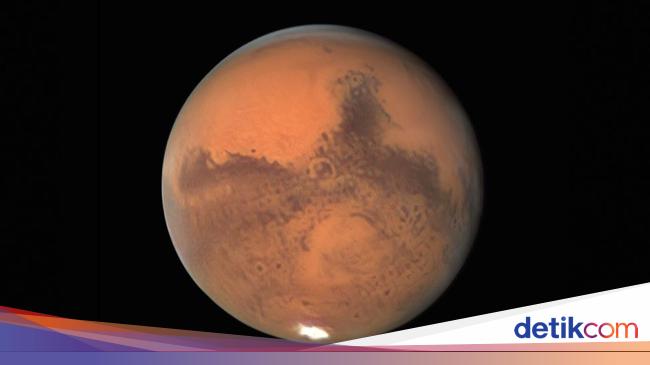Jakarta –
Earth and Mars it likely emerged from collisions between giant moon-sized rocks rather than the formation of tiny clumps of pebbles over time, a new study finds.
Previous research suggested there were two main ways in which rocky planets like Earth were built. The classic theory proposes that rocks the size of the Moon or Mars, dubbed planetary embryos, were once crushed together in the inner Solar System, and eventually gathered into full-sized planets.
A newer alternative concept envisions small pebbles from the outer Solar System drifting inward toward the Sun, gradually accumulating to form rocky planets, a process thought to be important for the formation of the cores of giant planets such as Jupiter and Saturn.
To see which model has the most potential to explain how the rocky planets in the Solar System formed, the scientists analyzed a total of about 0.77 ounces of material from 17 meteorites that came from Earth. Mars. These rocks were knocked off the Red Planet by an ancient asteroid impact, and eventually found their way to Earth.
Quoted from Space.com, the researchers examined how these samples varied in their isotopic composition. Isotopes are forms of the same chemical element that differ only in the number of neutrons in their nucleus. For example, uranium-234 has 142 neutrons in its nucleus while uranium-238 has 146 neutrons.
The scientists compared levels of titanium, zirconium and molybdenum isotopes from Mars and from Earth with different groups of meteorites from the inner and outer Solar System. They found that Earth and Martian rocks were more like meteorites than the inner Solar System, with only about 4% of their composition resembling the material of the outer Solar System. The large number of Martian meteorites they analyzed helped overcome conflicting results seen in previous studies analyzing small amounts of these rocks.
“Overall, we resolve conflicting interpretations of previous research and show that Earth and Mars formed from material that originates mostly from the inner Solar System,” said study lead author Christoph Burkhardt, a planetary scientist at the University of Münster in Germany.
“Only a few percent of the building blocks of these two planets come from outside Jupiter’s orbit. In doing so, we answer a fundamental question about what the Earth is made of, and this allows us to answer more fundamental questions about how the Earth formed.”
While the accumulation of pebbles may have played a major role in the formation of rocky planets around other stars, one of the reasons that it may have played only a minor role in the formation of rocky planets in our solar system is Jupiter, which can devour a lot of gravel and dust from the outer solar system. system that would normally drift inward toward the Sun.
This new finding also shows that Earth and Mars the possibility of combining material from a group of space rocks that is currently unknown to science.
“So the hunt is on, to be able to find samples with the predicted characteristics among meteorites that aren’t grouped in our collection would be great,” Burkhardt said.
Watch Videos “When Traveling to Planet Mars, Where Are the Destinations?“
[Gambas:Video 20detik]
(rns/afr)
– .


